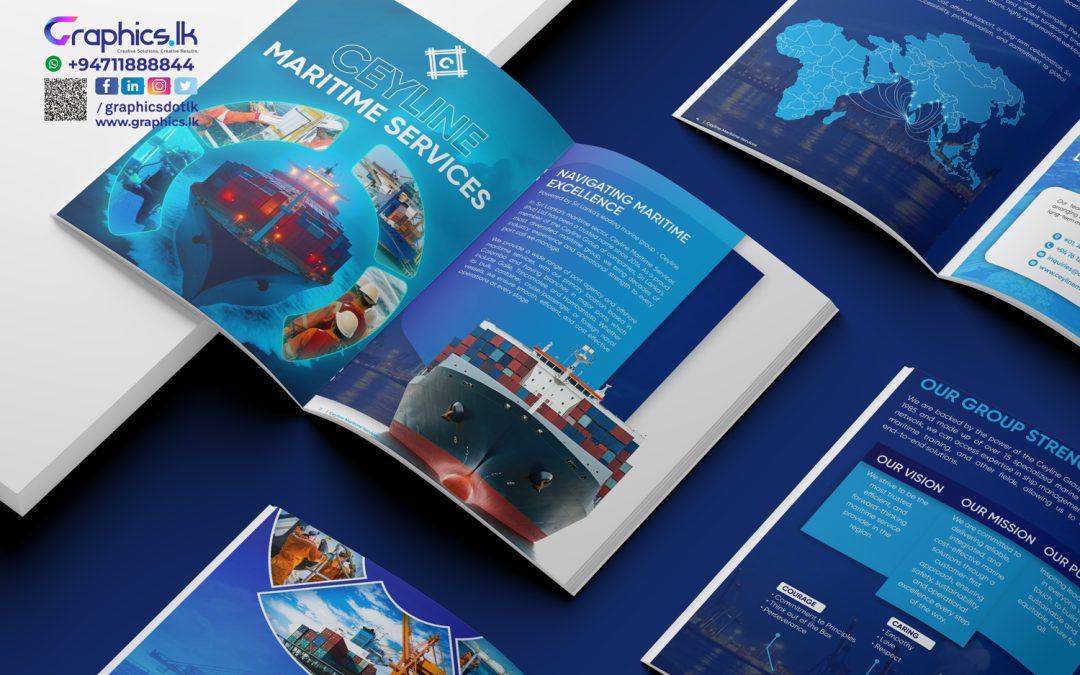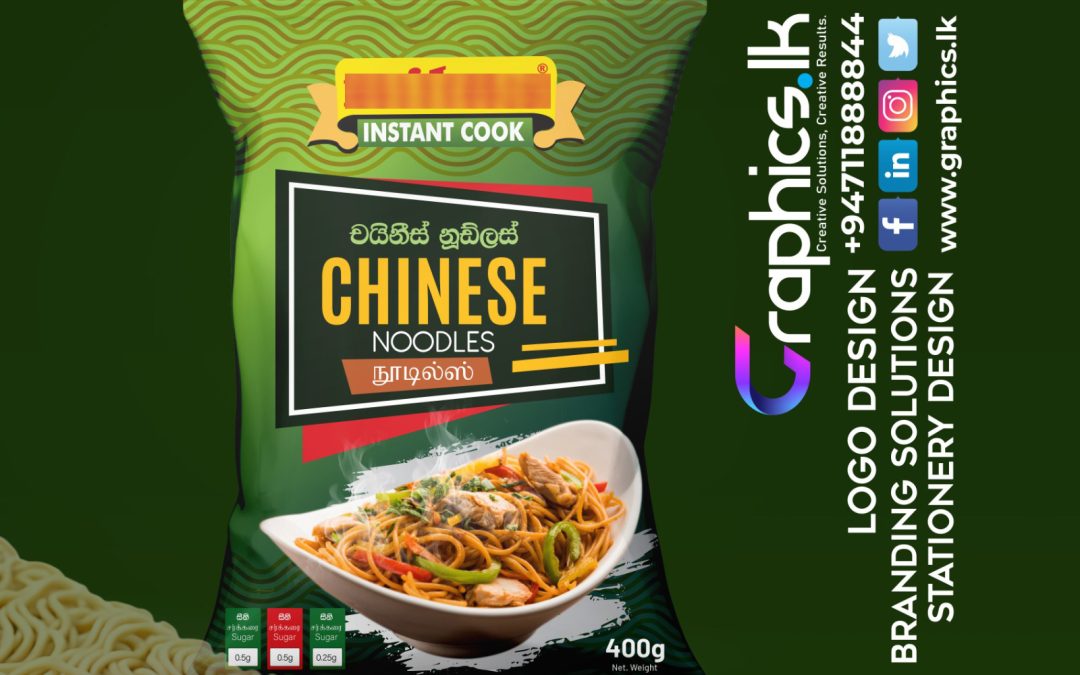
by [email protected] | Oct 30, 2025 | Blog, Graphic Design
Why a Well-Designed Company Profile Is the Key to Building Trust and Winning Clients
In today’s competitive business world, your company profile is often the first impression your brand makes on potential clients, investors, and partners. It’s more than just a few pages of information — it’s the visual and emotional representation of who you are, what you do, and why you matter.
At Graphics.lk, we specialize in creating custom company profiles that go beyond design — they tell your brand’s story with clarity, confidence, and creativity.
🌟 What Is a Company Profile?
A company profile is a professionally designed document that highlights your business identity, values, achievements, and offerings. It serves as a brand introduction and a marketing tool that communicates your credibility to the world.
Whether printed or digital, a great company profile reflects your brand tone, aligns with your visual identity, and leaves a lasting impression.
🎨 Why Design Matters
Design plays a powerful role in how your brand is perceived.
A cluttered or outdated layout can make even the strongest company look unprofessional. On the other hand, a clean, modern, and visually balanced design instantly builds trust.
At Graphics.lk, our creative team focuses on:
• ✏️ Crafting layouts that align with your brand identity
• 🎯 Structuring content for readability and flow
• 🌈 Using colors, typography, and visuals that reinforce your message
• 💡 Maintaining consistency across print and digital formats
📘 What We Include in a Professional Company Profile
Every business is unique — and so is every profile we design.
A standard Graphics.lk company profile includes:
• Company overview and background
• Vision, mission, and values
• Products and services
• Team and leadership details
• Milestones and achievements
• Client portfolio or case studies
• Contact information and brand visuals
Each section is carefully designed to reflect credibility, consistency, and professional storytelling.
🚀 Why Choose Graphics.lk
With years of experience in branding and design, our approach combines strategic thinking and creative excellence. We’ve crafted profiles for startups, corporates, government bodies, and international brands — each tailored to match their unique goals.
When you work with Graphics.lk, you get:
✅ A dedicated creative team
✅ Personalized design concepts
✅ Print and digital-ready versions
✅ Fast turnaround without compromising quality
💬 Final Thoughts
Your company profile is not just another document — it’s your brand handshake with the world.
Let’s make it one that people remember.
📞 Talk to our design experts today: +94 71 188 8844
🌐 Visit: www.graphics.lk
📧 Email: [email protected]
#companyprofiledesign #brandidentity #corporatedesign #marketingmaterials #businessbranding #graphicslk #creativeagency #brandstorytelling
by [email protected] | Oct 28, 2025 | Blog, Graphic Design
Company Profile Design
A strong company profile is your brand’s handshake—one document for pitches, tenders, investors, trade fairs, and your website. Keep it clear, proof-driven, and on-brand. Use the checklist at the end to finish fast.
⸻
Why a Company Profile Matters
A well-made company profile:
• builds instant credibility in the first 30–60 seconds
• unifies your message across sales, tenders, and PR
• shortens buying cycles by answering key questions up front
• becomes a reusable asset (print + PDF) for months or years
Perfect for: RFPs/tenders, investor meetings, distributor onboarding, trade shows, website downloads, cold outreach.
⸻
Recommended Structure (12–24 pages)
Use this as a flexible blueprint. Add or remove sections to fit your brand.
1. Cover & Tagline
Clean cover, logo, brand colors, 1-line value proposition.
2. At-a-Glance Summary
Who you are, what you do, who you serve, where you operate, top proof points.
3. About / Story
Origin, mission, vision, what makes you different.
4. Capabilities & Services
Service buckets with short benefit lines, not just features.
5. Industries Served
Brief bullets; highlight domain expertise.
6. Case Studies (2–4)
Problem → Solution → Outcome (metrics if possible).
7. Key Numbers & Milestones
Revenue-safe metrics, timelines, scale, reach, uptime, SLAs, certifications.
8. Clients & Testimonials
Logos with permission, short quotes with names/titles.
9. Team / Leadership
Show real people; 1–2 lines on credibility.
10. Process & Quality
How you work (steps, tools, standards, QA, security, compliance).
11. Sustainability / CSR (optional)
Policies, impact, audits.
12. Awards & Certifications (optional)
Only what matters to buyers.
13. Contact & Next Steps
Phone, email, WhatsApp, website, QR to a meeting link; clear CTA.
Deliverables: print-ready file + web-optimized PDF. Keep a source file for future updates.
⸻
Writing & Design Principles that Convert
• Lead with outcomes. Turn features into benefits (“24/7 monitoring → zero downtime for your store”).
• One idea per page. Use short paragraphs, subheads, and bullets.
• Consistent hierarchy. H1/H2/H3 styles, 2-font max, generous spacing.
• Visual proof. Infographics, charts, process diagrams, icons; avoid heavy jargon.
• Brand consistency. Colors, imagery, tone; align with your brand guidelines.
• Accessibility. Font size 10–12pt for print, 14–16px equivalent for PDF; strong contrast.
• Localize smartly. If you sell across regions, plan for Sinhala/Tamil/English or other languages.
⸻
What Proof to Include (Even If You’re New)
• Quantifiable metrics: projects delivered, clients served, uptime %, average turnaround time, CSAT/NPS.
• Before/After snapshots: what changed for the client.
• Named testimonials: include role/company where possible.
• Lightweight certifications/affiliations: only those buyers value.
No sensitive financials needed—buyers want reliability signals more than revenue figures.
⸻
Our Process (End-to-End)
1. Discovery call: goals, audience, use cases, page count.
2. Outline & content map: we propose sections and flow.
3. Copy polish: benefit-led headlines, tight paragraphs, proof points.
4. Design concept: 2–3 cover directions + an inner page style.
5. Full build: layout, icons, infographics, image curation.
6. Review rounds: structured revisions with tracked feedback.
7. Final exports: print-ready + web-optimized PDFs, source files.
⸻
Common Mistakes (and Easy Fixes)
• Trying to say everything → Prioritize top 3 buyer questions per section.
• Wall of text → Break into bullets, add subheads and visuals.
• Inconsistent voice → Choose a tone (professional, friendly, premium) and stick to it.
• Generic claims → Replace with specific outcomes and micro-metrics.
• Heavy file size → Optimize images, export a 3–8 MB web PDF.
⸻
Sample Page Plan (Keeps You on Track)
• 12 pages: Cover · Summary · About · Services · Industries · Case Study ×2 · Numbers · Clients/Testimonials · Process · Contact
• 16–20 pages: Add more case studies, team, CSR, awards, FAQ
⸻
Quick FAQ
Q: How long should a company profile be?
A: Most B2B profiles work well at 12–24 pages—enough to prove value without overwhelming.
Q: Can we use the same profile for print and email?
A: Yes. We export a print-ready file and a lighter web PDF with clickable links.
Q: Can you help with copywriting and data visuals?
A: Absolutely—content, design, and infographics are included.
Q: Do you handle multiple languages?
A: Yes. Sinhala/Tamil/English or other languages on request.
⸻
The 15-Point Final Checklist
• clear value proposition on page 1
• buyer-centric headlines (benefits, not buzzwords)
• crisp section flow (one idea per page)
• 2–4 case studies with outcomes
• credible numbers and timelines
• named testimonials / recognizable logos
• consistent typography and spacing
• branded icon set and infographics
• high-quality images (licensed or original)
• contact details and a direct CTA
• print-ready & web-optimized exports
• clickable links in the PDF
• accessible contrast and font sizes
• proofread by a fresh pair of eyes
• file size under 8 MB for easy sharing
⸻
Ready to Elevate Your First Impression?
We design company profiles that win trust, open doors, and look world-class—print and PDF.
Call/WhatsApp: +94 71 188 8844 · Website: graphics.lk
Company Profiles – https://graphics.lk/project_category/company-profiles/
Book and Magazine – https://graphics.lk/project_category/book-and-magazine/

by [email protected] | Oct 26, 2025 | Graphic Design
Your label is a promise. Your packaging is the experience. At Graphics.lk, we craft both—clear, compliant, and beautiful.
What you get: strategy boards, range systems, premium finishes, color proofing, and seamless handover to your printer. Launching a new SKU or rebranding an entire line? Let’s make it unforgettable.
Message us with your product and market (local/export) for a free mini-consult.
#graphicslk #packagingdesign #labeldesign #productlaunch #retaildesign #premiumpackaging #printdesign #madeinsrilanka








